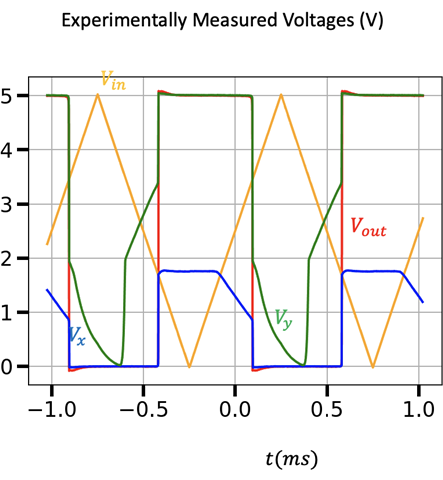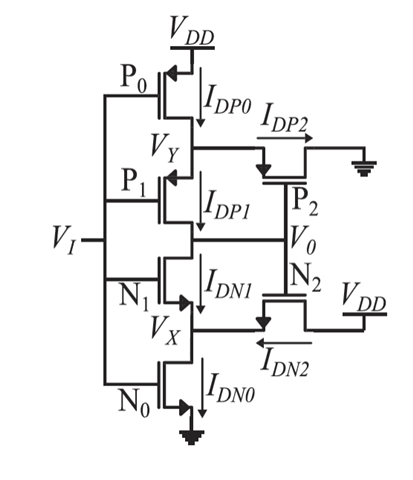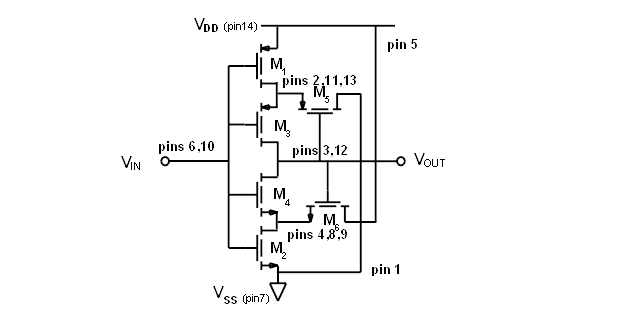Other Parts Discussed in Thread: CD40106B
When I connect CD4007UBE as a Schmitt Trigger, the voltage on pins 2,11,13 (Vy) does not behave as expected. These pins seem to have a capacitive coupling to ground. So Vy approaches zero when the output is zero. Is this behavior normal? The voltage Vx (pins 4,8,9) behaves as I would expect. The output voltage seems correct, and there is voltage hysteresis. Why are the measured voltages Vx and Vy not similar in shape? Please refer to the pictures below. Thanks for your help.




